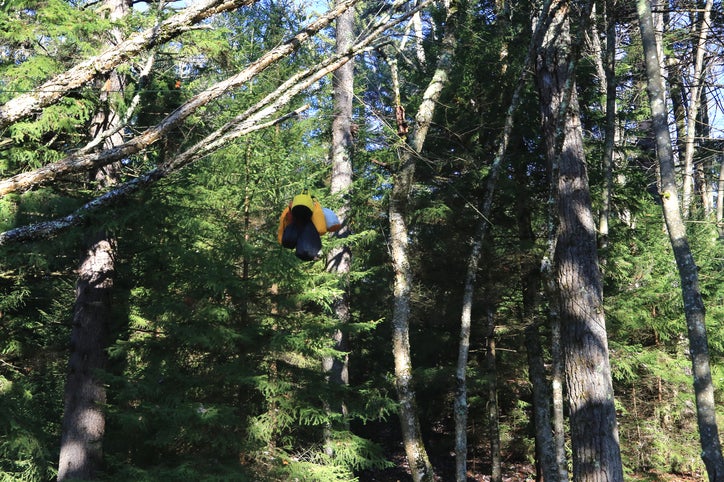Products You May Like
For as long as I can remember, I’ve enjoyed being on trail by myself more than with other people. While I didn’t start solo backpacking and camping until a few years ago, most of my dayhikes and peak-bagging excursions have always been alone. Last month I talked about the benefits of group outings, and how they take me out of my comfort zone. That’s all well and good, but for the most part, I’d rather go by my lonesome.
I started hiking alone right around when I started hiking. I quickly gained confidence and experience on my early hikes in the White Mountains with my dad; soon, I was heading out solo when he wasn’t available. Once I moved west, I had plenty of hiking and biking partners, but I still loved being alone on the trail.
To me, the benefits to solo backcountry travel are two-fold. While it may seem counterintuitive, I’ve often learned more hiking on my own than going with someone more experienced. I love learning from other people, but when I’m with someone who knows the ropes better than I do, I end up defaulting to their expertise, and I tend to get lazy. The best way for me to learn—when it’s safe to do so—is by doing it myself. Every once in a while, of course, this means I have to confront the fact that there’s a lot I still don’t know.
My first solo backpacking trip in bear country was a prime example of this. I packed my food bag and a coil of paracord and pranced happily out to a campsite by a pristine alpine lake. As it was starting to get dark, I collected water, inflated my sleeping pad, and collected all food and smelly items in my bear bag. Then I paused. This was always the part where my hiking partner had grabbed the bear hang and wandered off to find a suitable branch while I filtered water and finished setting up camp. Except now, it was just me.

Was it really possible that in all of my nights of backpacking and camping, I somehow had never hung the bear bag myself? I racked my brain, but I couldn’t come up with a single example. To make it worse, I could have counted on one hand the times I’d even gone out to “help” hang the bag. I knew the concept in theory—tie a weight to the end of the paracord, throw it over a sturdy branch at least six feet from the tree trunk and 15 feet off the ground, haul the bag up, tie it off.
Putting it into practice turned out to be a lot harder than I expected. The rock I tied to the paracord reached the branch maybe every fifth throw. When I finally got it over the branch, it got caught on another branch and wedged in place. Then the rock fell out of the loop of cord, then the paracord got tangled. Finally, when I was this close to giving up, I got the rock over the branch, hauled the stupid bag of food to the correct height, and managed to tie it off, where it dangled, somewhat precariously 15 feet over my head. It had taken nearly 30 minutes.
I was tired and irritated, but also a little proud of myself. On one hand, I felt like I should have known how to hang a bear bag: This was a beginner skill, and I wasn’t a beginner. But I had always defaulted to someone else who either enjoyed doing this task or was more adept at it. On the other hand, I had done the thing. By figuring it out through trial and error, I had added this skill to my back pocket, even if it had taken longer than I would have liked.
This is the second benefit of solo backpacking: confidence. The more I’ve figured out and experienced solo, the more sure of my own skills I’ve become. It wasn’t just that I had learned how to hang a bear bag: I had figured it out myself. If I could get the damn bag into the tree without anyone to hold my hand through it, what else could I do?
From route finding to campsite selection to bear bagging, the more skills I’ve figured out by myself, the more confidence I’ve gone into the next trip with. To be clear, I don’t recommend getting yourself into solo situations above your paygrade or where safety is a concern. But once you have enough backcountry experience to keep yourself safe, doing things alone helps expand skills and confidence by leaps and bounds. Maybe your partner always chose the tentsite, so it doesn’t occur to you to look out for potential water pooling, or maybe all of your off-trail travel has been in groups, so you haven’t really had to navigate. On a solo trip, there is no partner or group. There’s only you—and whenever you succeed, that’s yours, too.
Every time I’m faced with something new on a solo trip, I think back to the other issues I’ve solved on my own. It’s been one of the best parts of solo travel. I’ll just have to remember that next time I’m faced with a length of paracord, a heavy bag of food, and a tree.
